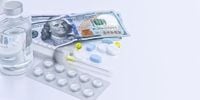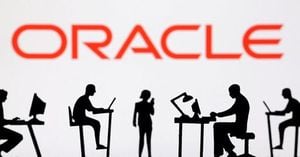On a gray afternoon in the Rose Garden, President Donald Trump unveiled his much-anticipated "Liberation Day" trade policy, introducing sweeping tariffs that have left both the economy and the pharmaceutical industry in a state of uncertainty. During a White House press event on April 2, 2025, Trump announced baseline tariffs of 10% on most imported goods, alongside reciprocal tariffs targeting countries with significant trade deficits with the U.S.
While the tariffs were intended to bolster American manufacturing, they have raised alarms among industry experts and economists alike. Notably, pharmaceuticals were excluded from the reciprocal tariffs, which include duties of 34% on China and 20% on the European Union. This exemption offers a temporary reprieve for the biopharma sector, which has been vocal about concerns that such trade penalties could escalate production costs and disrupt supply chains.
Jeff Stoll, the U.S. national strategy life sciences leader at KPMG, remarked, "The devil is a little bit in the details," highlighting that if active pharmaceutical ingredients (API) are included in the tariffs, it could significantly impact the costs of generic drugs. Stoll explained, "If APIs are still tariffed, generic drugs and the ability to produce them at low cost would be impacted." The baseline tariffs are set to take effect shortly after midnight on April 5, 2025, while reciprocal tariffs are expected to start on April 9, 2025, at 12:01 a.m. ET.
In the context of these tariffs, the motivation behind Trump’s policies appears to hinge on a desire to bring manufacturing back to U.S. soil. However, the pharmaceutical industry faces a complex challenge due to the "incredibly intertwined" nature of global supply chains. Stoll pointed out that many drug ingredients are not feasible to produce domestically due to environmental concerns and high labor costs.
As a result, drugmakers are caught in a difficult position. While they may need to raise prices to offset increased manufacturing costs due to tariffs, they also risk backlash from consumers and regulatory pressures, particularly under the Inflation Reduction Act. Major pharmaceutical companies like AbbVie, AstraZeneca, Eli Lilly, Merck & Co., and Pfizer currently operate ten major plants each within the U.S., positioning them relatively well against tariff threats.
However, the situation becomes more complicated when considering that 81% of non-U.S. drug ingredient plants registered with the FDA are located in Europe. As Stoll noted, the potential for rising costs could lead generic drugmakers, who have been competing on price, to pass these costs onto patients, further complicating the landscape.
Amid this backdrop, the response from the financial markets was swift. Following Trump’s announcement, stocks plunged in after-hours trading, with Dow futures down 0.61%, S&P 500 futures falling 1.69%, and Nasdaq 100 futures sliding 2.54%. CNBC analyst Bonawyn Eison described the situation as "worse than the worst case scenario that was modeled," referring to the potential economic fallout from the tariffs.
Economists have voiced concerns that these tariffs could lead to sluggish growth and higher prices for American consumers. Steve Liesman, CNBC’s senior economics reporter, suggested that Trump seems to be operating within his own economic reality, as the Cato Institute criticized the tariffs for being a tax increase that would inevitably result in diminished exports and manufacturing output.
Trump’s declaration of a national emergency to impose these tariffs has raised eyebrows, with many in the pharmaceutical industry urging caution. The fear is that the tariffs could hinder the U.S.'s status as a global leader in biopharma, especially as countries like China and South Korea have been rapidly enhancing their biopharma reputations in recent years.
As the industry grapples with the implications of these tariffs, companies are exploring various strategies to mitigate potential cost increases. Some have suggested rebalancing their manufacturing networks, seeking non-European API sources, and even considering expansions within the U.S. to adapt to the changing economic landscape.
In light of the uncertainty surrounding these tariffs, Stoll cautioned against making major reshoring decisions solely in response to policy shifts. The lengthy timelines required to establish new manufacturing facilities mean that companies must carefully evaluate whether such moves will remain viable under potential future administrations.
Despite the immediate challenges posed by Trump’s tariffs, there is a consensus that negotiations for more reasonable trade conditions will eventually take place. Stoll believes that the pharmaceutical industry, alongside its lobbying groups, should collaborate to propose a new tariff framework that accommodates both domestic interests and international manufacturing partners.
As the situation continues to evolve, the U.S. pharmaceutical industry finds itself at a crossroads, balancing the pressures of rising production costs, potential trade wars, and the imperative to maintain its innovative edge on the global stage. The coming weeks will be crucial in determining how these tariffs will reshape the landscape of American manufacturing and the biopharma sector.
In the meantime, major pharmaceutical companies are making significant investments in U.S. manufacturing, with Eli Lilly announcing a $27 billion commitment to build four new production facilities, while Johnson & Johnson plans to invest $55 billion in the U.S. over the next four years. These moves indicate a strong belief in the potential of U.S. manufacturing, even amidst the uncertainties posed by Trump’s trade policies.





